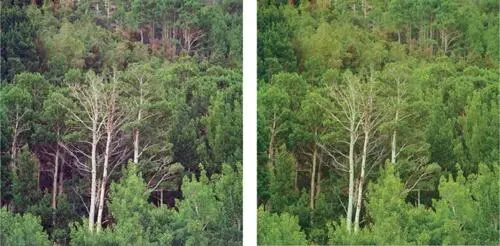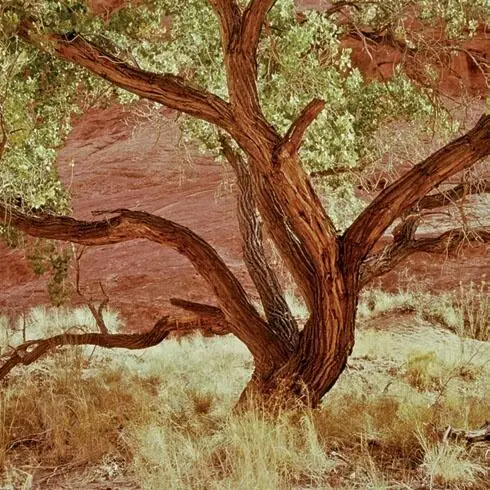Bruce Barnbaum - The Art of Photography - An Approach to Personal Expression
Здесь есть возможность читать онлайн «Bruce Barnbaum - The Art of Photography - An Approach to Personal Expression» весь текст электронной книги совершенно бесплатно (целиком полную версию без сокращений). В некоторых случаях можно слушать аудио, скачать через торрент в формате fb2 и присутствует краткое содержание. Жанр: Старинная литература, на английском языке. Описание произведения, (предисловие) а так же отзывы посетителей доступны на портале библиотеки ЛибКат.
- Название:The Art of Photography: An Approach to Personal Expression
- Автор:
- Жанр:
- Год:неизвестен
- ISBN:нет данных
- Рейтинг книги:5 / 5. Голосов: 1
-
Избранное:Добавить в избранное
- Отзывы:
-
Ваша оценка:
- 100
- 1
- 2
- 3
- 4
- 5
The Art of Photography: An Approach to Personal Expression: краткое содержание, описание и аннотация
Предлагаем к чтению аннотацию, описание, краткое содержание или предисловие (зависит от того, что написал сам автор книги «The Art of Photography: An Approach to Personal Expression»). Если вы не нашли необходимую информацию о книге — напишите в комментариях, мы постараемся отыскать её.
The Art of Photography: An Approach to Personal Expression — читать онлайн бесплатно полную книгу (весь текст) целиком
Ниже представлен текст книги, разбитый по страницам. Система сохранения места последней прочитанной страницы, позволяет с удобством читать онлайн бесплатно книгу «The Art of Photography: An Approach to Personal Expression», без необходимости каждый раз заново искать на чём Вы остановились. Поставьте закладку, и сможете в любой момент перейти на страницу, на которой закончили чтение.
Интервал:
Закладка:
I tend to like the effect of infrared film used with the weaker filters or no filter at all. It removes the bludgeon approach that makes it obvious that I’m dealing with infrared film. In general, I want my techniques to be so subtle that they are transparent. If people respond favorably to my prints, I want them to think that they could have produced the same photograph if only they had been in the right place at the right time. I don’t want any of my manipulations—either in exposing the negative or in printing it—to be obvious. In the same way, I don’t want the materials I use to be the issue of interest; I want the image itself to be the issue. So, the strong infrared effects that you get with infrared or deep red filters are generally much too blatant for my sensibilities. Viewers immediately say, “Aha, infrared film!” They are more aware of the film used than the image produced, and I feel that it generally detracts from the intended message.
Filters for Color Images
Filtration for color is not as pronounced as that for black-and-white, but the emotional impact of its subtleties can be every bit as great. Color filtration is limited to altering the color balance in the scene. In addition, filters can be used to change the balance of indoor film to outdoor film or vice versa (Chapter 6). An 85B filter with a  stop filter factor converts indoor transparency film to outdoor color balance. An 80A filter with a 2 stop filter factor converts outdoor film to indoor balance for tungsten lights with a color temperature of 3200 degrees. An 80B filter with a 1
stop filter factor converts indoor transparency film to outdoor color balance. An 80A filter with a 2 stop filter factor converts outdoor film to indoor balance for tungsten lights with a color temperature of 3200 degrees. An 80B filter with a 1  stop filter factor converts outdoor film to indoor balance for tungsten lights with a color temperature of 3400 degrees.
stop filter factor converts outdoor film to indoor balance for tungsten lights with a color temperature of 3400 degrees.

Photographed in the late afternoon under the shade of a nearby ridge, Figure 7-3 takes on a mild yet distinct blue cast. For Figure 7-3, I used a CC10Y yellow color correction filter to neutralize the shift toward blue, giving the image a more natural feel..
Figure 7-3. Aspen Group, Sierra Nevada Mountains
For general color correction, the prime tools are color correction (CC) filters. They are available in several colors—red, magenta, blue, cyan, yellow, and green—and varying intensities of hue in each of the colors. They are nicely color coded by both color and hue intensity as follows: after the letters CC, a number signifies the intensity of the hue and a final letter indicates the color of the filter. Thus, magenta filters come in CC05M, CC10M, CC20M, CC30M, etc., in which two CC05M filters equal one CC10M. Similarly for green, two CC10Gs equal one CC20G. Filters can be combined to reach any desired filtration level and combination. Thus, if you need 25 units of yellow and magenta for filtration, add CC20M + CC05M to CC20Y + CC05Y.
My experience with CC filters shows that for every 25 units of filtration, there is a filter factor of ½ stop, so the 25M + 25Y combination would necessitate a 1 stop filter factor (i.e., open up your exposure one full stop after metering the scene when using those two filters in combination). A full explanation of this procedure can be found in Chapter 8 and Chapter 9.
CC filters are available as thin gels, somewhat like thick cellophane sheets, which are placed in front of the lens like any other filter. The filters alter the color balance of the scene, shifting it toward the color of the filter just as if they were cellophane sheets—except the filter’s shift is quite subtle.
In the previous chapter, I pointed out that outdoor color film tends to shift toward blue in the shadows or under cloudy conditions. This can be an advantage at times, but it can be harmful as well. Color correction filters can neutralize this blue shift (Figure 7-3 and Figure 7-3). My own experience shows that a combination of CC10M and CC05Y, or alternately, CC10Y and CC05M, returns the color shift to the colors I see. If I want to subtly emphasize yellows or greens in the transparency, I use the CC10Y + CC05M combination, but if I want to bring out warmer tones, I tend to use the CC10M + CC05Y combination. I have used the two combinations often when photographing the deep, red-walled canyons of Utah and Arizona (Figure 7-4).

In this deep canyon of Northern Arizona, I combined CC10M and CC05Y filters to warm the scene. The major emphasis was on warming the walls and tree trunk to prevent a blue cast.
Figure 7-4. Shiva the Dancer, Paria Canyon
CC filters can be used not only to neutralize unwanted color shifts, but also to enhance moods by enriching colors. Suppose you have a composition dominated by green leaves, but they are rather dull in color. A combination of yellow and green CC filters could lighten and enliven the colors. In a similar way, slight amounts of red CC filtration could warm skin tones for portraits—or, you could do a variation on Newman’s portrait of Krupp by using a green CC filter for a more macabre look! Only the slightest amounts of filtration (CC05 or CC10) should be used, or the results may look too contrived.
It takes some time, and a good feel for mood, to learn how to effectively use CC filters, but the emotional shifts they can create are quite remarkable. The emotional connotations of slight color variations have extraordinary impact. CC filters should be an indispensible part of any serious color photographer’s tool kit.
An abundance of other filters can be used for color filtration. The most well known are the haze, skylight, and ultraviolet (UV) filters, which correct for the blue cast of ultraviolet light in bright sun or high altitudes. Film responds strongly to UV light. Since the eye compensates and we tend not to see the blue shift, these correction filters can be very valuable in reducing the blue.
Many people place a filter permanently on the lens, feeling that the correction is proper and that the filter affords protection from damage in case of an accident. This strikes me as a strange approach. First, permanent use of a filter reduces options for later filtration. Second, if the film looks better with the filter on permanently, it may indicate that you should seek another film with a more pleasing color balance. Finally, if you need protection from lens damage, it may indicate that you are too careless and should change your habits, pronto!
One final note on color filtration: CC filters can be combined in extremely high levels to correct for the green shift of fluorescent lighting. However, there are many different types of fluorescent lights, and each requires its own filtration packet. You can write to Kodak or Fuji and obtain their booklet explaining fluorescent filtration. As an example, the appropriate filtration for old Ektachrome or current Fujichrome indoor 4 × 5 transparency film is CC50M + CC60Y for “cool white” fluorescent, with a filter factor of 2 stops. This is a great amount of filtration, but since it does negate the unpleasant green shift associated with fluorescent lighting, it’s worth using.
Many digital cameras avoid this issue entirely with an automatic white balance feature that recognizes fluorescent lighting and rebalances color for it. On some cameras, you have to do it manually. Either way, it’s a valuable feature, one that removes a lot of guesswork and discolored images that can be the bane of traditional color films. Of course, fluorescent lighting is never a problem with black-and-white film because it sees only light levels, not colors.
Читать дальшеИнтервал:
Закладка:
Похожие книги на «The Art of Photography: An Approach to Personal Expression»
Представляем Вашему вниманию похожие книги на «The Art of Photography: An Approach to Personal Expression» списком для выбора. Мы отобрали схожую по названию и смыслу литературу в надежде предоставить читателям больше вариантов отыскать новые, интересные, ещё непрочитанные произведения.
Обсуждение, отзывы о книге «The Art of Photography: An Approach to Personal Expression» и просто собственные мнения читателей. Оставьте ваши комментарии, напишите, что Вы думаете о произведении, его смысле или главных героях. Укажите что конкретно понравилось, а что нет, и почему Вы так считаете.












